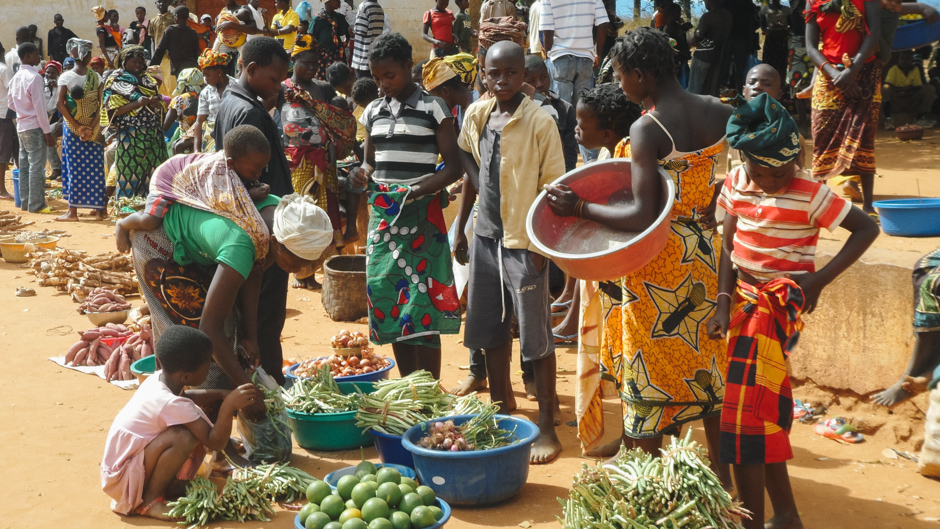
“Wherever men and women are condemned to live in extreme poverty, human rights are violated. To come together to ensure that these rights be respected is our solemn duty.“
— Joseph Wresinski, Text Engraved on Original Commemorative Stone in Paris
17th OCTOBER
The International Day for the Eradication of Poverty is an international observance celebrated each year on October 17 throughout the world. The first commemoration of the event took place in Paris, France in 1987 when 100,000 people gathered on the Human Rights and Liberties Plaza at the Trocadéro to honor victims of poverty, hunger, violence, and fear at the unveiling of a commemorative stone by Joseph Wresinski, founder of the International Movement ATD Fourth World. In 1992, four years after Wresinski’s death, the United Nations officially designated October 17 as the International Day for the Eradication of Poverty.

10 Facts about Global Poverty:-
- At least 80% of humanity lives on less than $10 a day.
- More than 80 percent of the world’s population lives in countries where income differentials are widening.
- The poorest 40 percent of the world’s population accounts for 5 percent of global income. The richest 20 percent accounts for three-quarters of world income.
- According to UNICEF, 22,000 children die each day due to poverty. And they
die quietly in some of the poorest villages on earth, far removed from the scrutiny and the conscience of the world. Being meek and weak in life makes these dying multitudes even more invisible in death.
- Around 27-28 percent of all children in developing countries are estimated to be underweight or stunted. The two regions that account for the bulk of the deficit are South Asia and sub-Saharan Africa.
- If current trends continue, the Millennium Development Goals target of halving the proportion of underweight children will be missed by 30 million children, largely because of slow progress in Southern Asia and sub-Saharan Africa.
- Based on enrollment data, about 72 million children of primary school age in the developing world were not in school in 2005; 57 per cent of them were girls. And these are regarded as optimistic numbers.
- Nearly a billion people entered the 21st century unable to read a book or sign their names.
- Less than one per cent of what the world spent every year on weapons was needed to put every child into school by the year 2000 and yet it didn’t happen.
- Infectious diseases continue to blight the lives of the poor across the world. An estimated 40 million people are living with HIV/AIDS, with 3 million deaths in 2004. Every year there are 350–500 million cases of malaria, with 1 million fatalities: Africa accounts for 90 percent of malarial deaths and African children account for over 80 percent of malaria victims worldwide.



For economic growth and almost all of the other indicators, the last 20 years [of the current form of globalization, from 1980 – 2000] have shown a very clear decline in progress as compared with the previous two decades [1960 – 1980]. For each indicator, countries were divided into five roughly equal groups, according to what level the countries had achieved by the start of the period (1960 or 1980). Among the findings:
- Growth: The fall in economic growth rates was most pronounced and across the board for all groups or countries.
- Life Expectancy: Progress in life expectancy was also reduced for 4 out of the 5 groups of countries, with the exception of the highest group (life expectancy 69-76 years).
- Infant and Child Mortality: Progress in reducing infant mortality was also considerably slower during the period of globalization (1980-1998) than over the previous two decades.
- Education and literacy: Progress in education also slowed during the period of globalization.
Ending Poverty:-
While global poverty rates have been cut by more than half since 2000, one in ten people in developing regions still lives on less than US$ 1.90 a day – the internationally agreed poverty line, and millions of others live on slightly more than this daily amount. Significant progress has been made in many countries within Eastern and Southeastern Asia, but up to 42 per cent of the population in Sub-Saharan Africa continues to live below the poverty line.
Sustainable Goals:-
The SDGs’ main reference to combatting poverty is made in target 1.A:
“Ensure significant mobilization of resources from a variety of sources, including through enhanced development cooperation, to provide adequate and predictable means for developing countries, in particular least developed countries, to implement programmes and policies to end poverty in all its dimensions.”
The SDGs also aim to create sound policy frameworks at national and regional levels, based on pro-poor and gender-sensitive development strategies to ensure that by 2030 all men and women have equal rights to economic resources, as well as access to basic services, ownership and control over land and other forms of property, inheritance, natural resources, appropriate new technology and financial services, including microfinance.








More Stories
Brent Renaud: Award-Winning US Filmmaker Killed In Ukraine
Bob Wall: ‘Enter The Dragon’ Actor Died At 82
FIFA 2022 Tickets: Here Is Everything You Need To Know